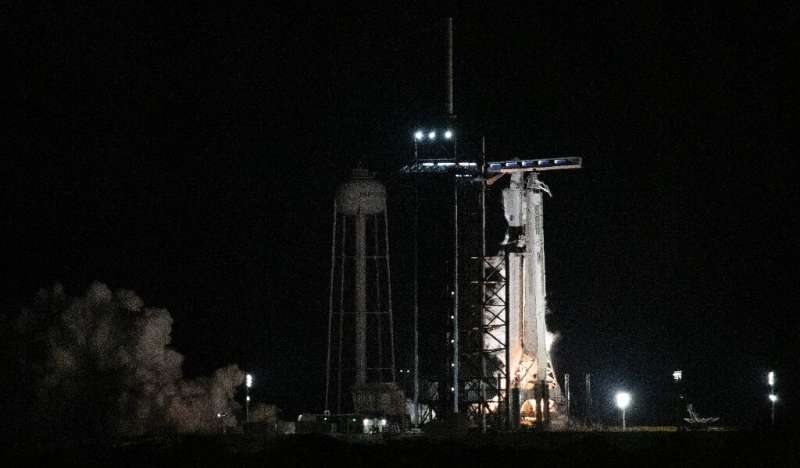
Copernical Team
OffWorld Europe makes its debut in Luxembourg developing space mining robots
 OffWorld, a pioneer in AI-powered industrial Swarm Robotic Mining systems on Earth, has expanded to take on space with the establishment of OffWorld Europe. Kyle Acierno, former CEO of ispace U.S. and an international expert in commercial space and lunar exploration, will manage the new division.
OffWorld Europe will focus on developing and deploying modules for the extraction and storage
OffWorld, a pioneer in AI-powered industrial Swarm Robotic Mining systems on Earth, has expanded to take on space with the establishment of OffWorld Europe. Kyle Acierno, former CEO of ispace U.S. and an international expert in commercial space and lunar exploration, will manage the new division.
OffWorld Europe will focus on developing and deploying modules for the extraction and storage China to install new optical telescope on Pamirs
 China will install a new optical telescope on the Pamirs, which will be the third largest in the country, according to Xinjiang Astronomical Observatory under the Chinese Academy of Sciences.
The telescope will be placed at the Muztagh observatory in southern Xinjiang's Aketao County.
The observatory is at an altitude of 4,520 meters. Its best seeing, which means the sharpness of a t
China will install a new optical telescope on the Pamirs, which will be the third largest in the country, according to Xinjiang Astronomical Observatory under the Chinese Academy of Sciences.
The telescope will be placed at the Muztagh observatory in southern Xinjiang's Aketao County.
The observatory is at an altitude of 4,520 meters. Its best seeing, which means the sharpness of a t China launches new communications satellite
 Feb. 23 (Xinhua) - China on Thursday sent a new communications satellite into orbit from the Xichang Satellite Launch Center in southwest China's Sichuan Province.
The "ChinaSat 26" satellite was launched at 7:49 p.m. (Beijing Time) by a Long March-3B carrier rocket.
The satellite will mainly provide high-speed broadband access services for fixed terminals as well as vehicle-mounted,
Feb. 23 (Xinhua) - China on Thursday sent a new communications satellite into orbit from the Xichang Satellite Launch Center in southwest China's Sichuan Province.
The "ChinaSat 26" satellite was launched at 7:49 p.m. (Beijing Time) by a Long March-3B carrier rocket.
The satellite will mainly provide high-speed broadband access services for fixed terminals as well as vehicle-mounted, Tennessee company gets multibillion-dollar NASA contract for Kennedy Space Center operations
 NASA announced Thursday that it will award a new $3.2 billion contract to Jacobs Technologies to manage launch infrastructure and maintain ground systems at Kennedy Space Center.
The Consolidated Operations, Management, Engineering and Test contract from NASA secures engineering, launch, landing and recovery services and more for the agency and commercial partners using the space center in
NASA announced Thursday that it will award a new $3.2 billion contract to Jacobs Technologies to manage launch infrastructure and maintain ground systems at Kennedy Space Center.
The Consolidated Operations, Management, Engineering and Test contract from NASA secures engineering, launch, landing and recovery services and more for the agency and commercial partners using the space center in Crew-6 ready for launch and a program of scientific studies on ISS
 NASA's SpaceX Crew-6 mission is scheduled to launch to the International Space Station as soon as February 27 from the agency's Kennedy Space Center in Florida. NASA astronauts Stephen Bowen and Warren "Woody" Hoburg, along with UAE (United Arab Emirates) astronaut Sultan Alneyadi and Roscosmos cosmonaut Andrey Fedyaev, head to the orbiting laboratory for a six-month mission to conduct scientifi
NASA's SpaceX Crew-6 mission is scheduled to launch to the International Space Station as soon as February 27 from the agency's Kennedy Space Center in Florida. NASA astronauts Stephen Bowen and Warren "Woody" Hoburg, along with UAE (United Arab Emirates) astronaut Sultan Alneyadi and Roscosmos cosmonaut Andrey Fedyaev, head to the orbiting laboratory for a six-month mission to conduct scientifi Unusual atom helps in search for Universe's building blocks
 An unusual form of caesium atom is helping a University of Queensland-led research team unmask unknown particles that make up the Universe.
Dr Jacinda Ginges, from UQ's School of Mathematics and Physics, said the unusual atom - made up of an ordinary caesium atom and an elementary particle called a muon - may prove essential in better understanding the Universe's fundamental building block
An unusual form of caesium atom is helping a University of Queensland-led research team unmask unknown particles that make up the Universe.
Dr Jacinda Ginges, from UQ's School of Mathematics and Physics, said the unusual atom - made up of an ordinary caesium atom and an elementary particle called a muon - may prove essential in better understanding the Universe's fundamental building block Starliner crew performs cabin operations, checks out tools
 NASA astronauts assigned to the Starliner's upcoming Crew Flight Test (CFT) completed the first part of a two-part Crew Equipment Interface Test (CEIT) this week. CEIT is a critical milestone for NASA, Boeing and the International Space Station program, typically conducted about two months prior to launch. It gives astronauts the opportunity for hands-on training with the actual tools, equipment
NASA astronauts assigned to the Starliner's upcoming Crew Flight Test (CFT) completed the first part of a two-part Crew Equipment Interface Test (CEIT) this week. CEIT is a critical milestone for NASA, Boeing and the International Space Station program, typically conducted about two months prior to launch. It gives astronauts the opportunity for hands-on training with the actual tools, equipment SpaceX Dragon crew to blast off for ISS

A SpaceX Falcon 9 rocket is to blast off early Monday for the International Space Station carrying two NASA astronauts, a Russian cosmonaut and the second Emirati to voyage to space.
The SpaceX Dragon Crew-6 mission is set to lift off from the Kennedy Space Center in Florida at 1:45 am (0645 GMT). Weather conditions are expected to be near perfect.
The Crew Dragon capsule, dubbed Endeavour, is scheduled to dock with the ISS at 2:38 am (0738 GMT) on Tuesday if all goes as planned.
NASA's Stephen Bowen and Warren Hoburg, Russia's Andrey Fedyaev and Sultan al-Neyadi of the United Arab Emirates are to spend six months on the orbiting space station.
Neyadi, 41, will be the fourth astronaut from an Arab country and the second from the oil-rich United Arab Emirates to journey to space; his countryman Hazzaa al-Mansoori flew an eight-day mission in 2019.
Russian ship docks with ISS to replace damaged capsule

An uncrewed Russian Soyuz capsule docked early Sunday with the International Space Station and will eventually bring home three astronauts whose initial return vehicle was damaged by a tiny meteoroid.
The MS-23 ship autonomously latched to the orbiting research lab, live video from ISS-partner NASA showed, completing the Soyuz's two-day journey after launching off from Kazakhstan.
It is expected to bring home US astronaut Frank Rubio and Russian cosmonauts Dmitry Petelin and Sergei Prokopyev in September.
The three arrived at the ISS last September aboard MS-22, and were originally only supposed to stay about six months, until the end of March.
But their capsule began leaking coolant in mid-December after being hit by what US and Russian officials believe was a tiny space rock.
Roscosmos, the Russian space agency, decided to send MS-23 to replace the damaged vessel, but without its own three planned crew members.
With no one to replace them, Rubio, Petelin and Prokopyev will now spend almost a year in space.
The damaged MS-22 is expected to depart the space station without passengers and return to Earth in late March.
New study offers insight into how Venus cools
 Large geological patterns on Venus, called Coronae, may provide answers to how the planet releases heat, according to a research study from scientists at NASA's Jet Propulsion Laboratory.
On Earth, the planet's core heats the surrounding mantle which then conveys heat to the outer layer or lithosphere, where it then radiates out into space, causing the Earth's mantle to cool, driving th
Large geological patterns on Venus, called Coronae, may provide answers to how the planet releases heat, according to a research study from scientists at NASA's Jet Propulsion Laboratory.
On Earth, the planet's core heats the surrounding mantle which then conveys heat to the outer layer or lithosphere, where it then radiates out into space, causing the Earth's mantle to cool, driving th 































